Brief Guide on Food Safety Standards to be Adopted Summer in South India
Mahalakshmi Murugesan*
Senior Dietitian, Kauvery Heartcity, Trichy, India.
*Correspondence: dietary.khc@kauvery.in
Food safety definition – What is food safety?
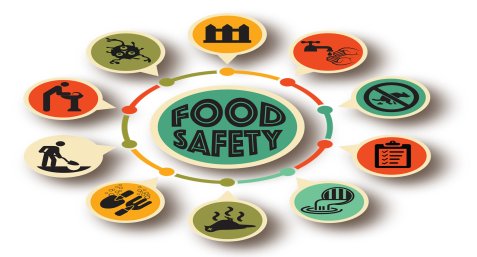
Food safety refers to the proper food handling procedures applied during food preparation, processing, storage, and distribution of the products you deal with in your food business. The concern for the integrity of food safety lingers within all the parts of a food supply chain. The concern for the food production life cycle starts from agriculture to packaging of finished products and delivery to the consumer’s table.
Controlling food safety requires knowledge about what could endanger its integrity and stability. Food safety is negatively affected by contaminations along your food supply chain. These contaminations can be caused by biological, chemical, physical, and radiological hazards that can affect all key junctures of your operation. Without the proper management and control of food safety, issues such as food borne diseases and food-related injuries can occur.
Food handling practices that can be applied to keep food products wholesome are what is food safety made up of. All of the members of the food supply chain must comply with established standards and legislation to maintain food safety. Proper handling and industrial processes may include cooking at the right internal temperature to prevent under cooked meat, preventing cross-contamination through proper segregation to prevent contact, storing foods at proper refrigeration temperatures, and other critical control points that help render potential infectious diseases ineffective.
Additionally, consumers also play a significant role when it comes to food safety. Customers are expected to follow storage and processing directions for the products they purchase, especially if these are raw materials. Participation of consumers towards food safety is also seen through their demand for high-quality, safe products and voicing their complaints if there are food safety issues.
Why is food safety important?
Recent data released by the World Health Organization have estimated that at least 600 million people all over the world become inflicted with food borne illnesses after consuming unsanitary food. Of these people, at least 420,000 people die every year. Economic progress can become affected by productivity loss and medical expenses as a result of a food borne disease burden.
The majority of food safety issues are caused by pathogenic microorganisms such as bacteria that cause food poisoning or food intoxication. They can cause mild to fatal health consequences that include watery diarrhea, vomiting, abdominal pain, or even debilitating infections and long-term diseases. The consequences of food safety issues may have fatal outcomes for both food business owners and consumers.
Basic and everyday foods can easily become contaminated. Some examples of foods involved in common illnesses include high-risk ingredients and any perishable food such as eggs, poultry, fresh fruits, raw meat,seafood salads, under cooked seafood, ground meat, raw sprouts, and raw milk products. These ingredients can become contaminated by intestinal pathogens such as bacteria and cause infection if preventive measures are not applied.
A few reasons why it is important to keep food safety controlled:
- Protection from food borne illnesses and other food-related injuries
- Reduced cost from food safety issues.
- Reduce waste.
- A better way of living.
- Sustainable food production.
- Safer food globalization
How does food safety help to save lives?
Food safety plays a great role within the entire food chain more than we think it does. Food businesses are required to implement food safety management systems to protect the health of consumers from any food borne disease. Beyond this concept, food safety contributes as well to important necessities in society as food security.
When properly implemented, food safety practices can help detect and control food safety risks, and contribute to economic prosperity, food security, and continuous and sustainable development. By providing safe food for consumption, a continuous supply of food for everyone can be ensured. The many benefits of food safety in various aspects of life prove why is food safety important for everyone.
The concept of farm-to-fork (or farm-to-table) food safety is well-known in the food industry. This concept tells us that food safety should be observed right from the beginning when raw foods are just being produced up until the finished product reaches the consumer. Standard food safety practices for growing produce have been established in laws such as the Food Safety Management Act in the United States. The farm-to-fork concept emphasizes how food safety hazards can occur at any point in the food supply chain.
The ultimate goal of food safety is to create a sustainable and secure food supply for everyone. This goal aims to emphasize the enjoyable experience of food while being sure that the food we get is safe. When all participating parties in the entire food chain, manufacturers, suppliers, the government, and consumers, play their role in food safety, this goal can be achieved.
How to keep food safe in summer
More-than-200-diseases-are-spread-through-contaminated-food-or-water.
Contaminated and unsafe food, especially in summers, causes more infections and diseases that range from diarrhea and cramps to severe infections like jaundice and typhoid.
More than 200 diseases are spread through contaminated food or water. Still, most of us don’t always know what went into our last meal.
“Not many would know that the most dangerous bacteria that cause food poisoning do not affect food’s look, smell, or taste.
These bacteria, viruses and parasites invade and multiply in the lining of the intestines and other tissues, even reaching the intestinal tract and releasing harmful toxins.
At the household level, food safety starts from buying things from the market and extends to how one stores things at home and ultimately how the food is cooked.
As for storing food, raw and cooked food needs to be stored separately to stop cross-contamination.
Maintaining temperature is important; hot foods should be eaten hot and cold food should be maintained under adequately cold temperature.
Food should not be stored in a refrigerator for very long. Just because food is kept in refrigerator does not mean it won’t spoil.
What are Food borne Illnesses?
Uncooked food or leftovers that haven’t been stored properly can play host to microorganisms. If you consume these germs, you can get very sick. Scientists know of more than 250 viruses, parasites, and bacteria that can infest food items and cause illness in people. Other types of food poisoning are caused by chemicals or other contaminants that get on the surface of the food. ‌
These illnesses usually cause stomach upset along with other symptoms. They can last a few hours or several days. Children, older adults, the immunocompromised and pregnant women are at higher risk for food poisoning. The most common signs of a foodborne illness include: Most cases of food poisoning get better within a few days but some cases require help from a doctor. If you suspect you have a foodborne illness, you should call your doctor for advice.
- Upset stomach
- Stomach cramps
- Nausea
- Vomiting
- Diarrhea
- Fever
Five food rules to follow in summers:
With the temperature rising, and summer heat scrolling up people look for ways to cool themselves. Heat exhaustion can happen to anybody, one has to pay special attention to the elderly and children, as they often tend to miss early symptoms of dehydration (nausea, throbbing headaches, increased heart rate, excessive sweating and dizziness, deep yellow colour urine, etc.) Hydration is the key to staying well during summer. It is suggested to have plenty of fluids, replenish electrolytes, and eat easily digestible locally available seasonal foods for good well-being these summers.
Ice does not help

We tend to use more ice and frozen beverages to cool ourselves, but when you tend to drink cold water, your body will warm it up, it will not give a cooling effect to your body. It is just that by drinking ice water you have a feel-good factor, and it is your preference. Having plenty of water is the key to saving yourself from dehydration while working in an AC atmosphere. We tend to sip water, so regularly sipping water is important. Try an age-old tradition and have water from pot water.
Benefits of drinking water from clay pot
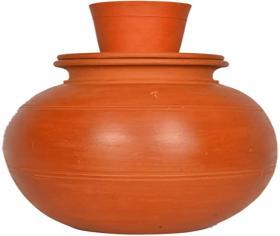
Natural cooling properties. One of the main benefits of drinking water from clay pots is its natural cooling properties.
Maintains pH balance. The pH level of water is important for our health.
Enhances the taste.
Natural filtration.
Provides essential minerals.
Eco-friendly.
Benefits of consuming buttermilk in the summer

Buttermilk is also beneficial to those who experience hot flushes during the summer due to its cooling properties. It helps in regulating hormones in post-menopausal women as well as restores any loss of electrolytes from the body, as a result of sweating. Buttermilk is also helpful for those suffering with irritable bowel syndrome and is great to maintain good bone health.
Benefits of consuming nannari in the summer
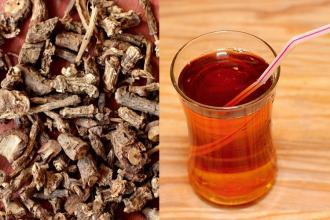
- It is a body coolant.
- It purifies your blood.
- It cures constipation.
- It cures urinary infections.
- It aids in digestion.
- It is good for your skin.
- It helps with weight loss.
The reason to have seasonal fruits and vegetables
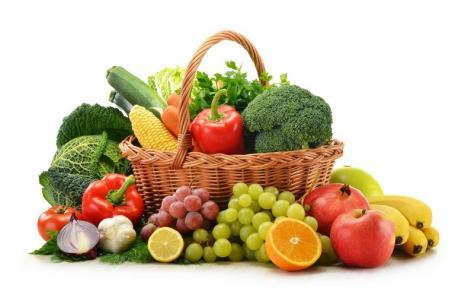
Eat plenty of fruits and vegetables that are available locally and as per season. During summer season one should have cooling vegetables like: bottle gourd, apple gourd, cucumber, mint, lemon, and bitter gourd available. Choose them over cauliflowers, methi , etc. Eat fruits loaded with water like watermelon, muskmelon, pears, litchi, peaches etc. – they will help you save from dehydration. These seasonal fruits also have anti-inflammatory properties.
Always eat fresh in summers

Food safety is another aspect for your well being during summers, Food infections are often at rise during summers. Choose wisely when buying cooked food from the market, buy food which is freshly prepared, avoid eating stale food. Check wherever possible on the cold chain mechanism of keeping food which are perishable in nature e.g., Milk and milk products, curd items, potatoes boiled, paneer, non veg food products etc. Avoid eating raw food like salads, which are not stored at appropriate temperatures. Sandwiches/ bajji / samosas are classic examples of foods that can be stored for days and can lead to stomach infection.
Avoid artificial drinks
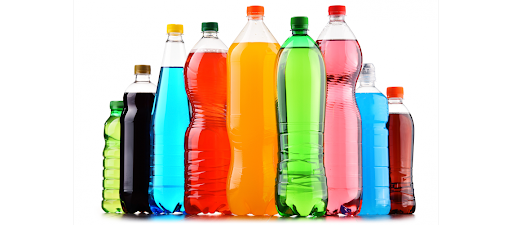
Artificial aerated drinks are high on sugar and preservatives. Prefer choosing drinks like fresh coconut water, buttermilk, detox water (homemade), barley water, masala mango juice, kokum water, fresh fruit juices, preserved smoothie etc.
Salt may be harmful
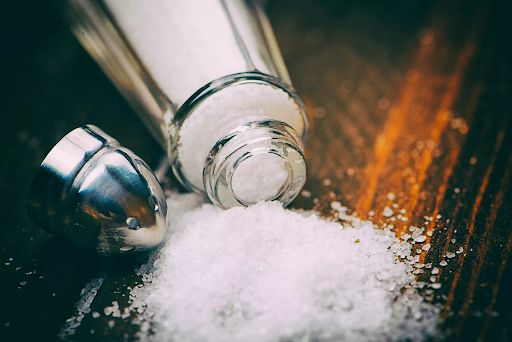
We know excessive amounts of salt is not advised during summers, as the body will have to work harder to eliminate that extra sodium and osmolality shift also happens when you eat extra salt, and the urge for more water after salty food shifts the osmolality. Though you would drink more water after salty food, you would be dehydrated, so do not add extra salt to your drinks and food. Avoid spicy foods too as they tend to produce warmness in your body.
Here are some steps to help readers know how they can make their food safe.
Keep clean
- Wash hands before handling food and often during food preparation.
- Wash your hands after going to toilet, handling pets etc.
- Wash and sanitize all surfaces and equipment used in food preparation.
- Protect kitchen areas and food from insects, pets and other animals.
Separate raw and cooked food
- Separate raw meat, poultry and seafood from other foods to stop cross-contamination.
- Use separate equipment and utensils such as knives and cutting boards for handling raw foods.
Raw food, especially meat, poultry and seafood, and their juices contain dangerous microorganisms which may be transferred onto other foods during food preparation and storage food in containers to avoid contact between the raw and the cooked foods.
Cook thoroughly
- Cook thoroughly especially meat, poultry, eggs and seafood.
- Bring foods like soups and stews to boiling to make sure that they have reached 70 degrees Celsius.
- For meat and poultry make sure the juices are clear and not pink.
- Reheat cooked food thoroughly.
- Ideally use a thermometer to check temperature.
Proper cooking kills almost all dangerous microorganisms. Studies have shown that cooking food to a temperature of 70 degrees Celsius can help ensure it is safe for consumption. Foods that require special attention include minced meats, rolled roasts, large joints of meat and whole poultry.
Keep food at safe temperatures
Keep food at safe temperature: Danger zone is between 5 degrees Celsius and 60 degrees Celsius.
- Do not leave cooked food at room temperature for more than 2 hours.
- Refrigerate cooked food and all perishable items as quickly as possible as bacteria can develop in foods within 2 hours at room temperature.
- Refrigerate all cooked and perishable foods preferably below 5 degrees Celsius.
- Do not store food too long even in the refrigerator. Consume it quickly.
- Do not thaw frozen food at room temperature as it causes bacteria to grow rapidly.
- Keep cooked food piping hot (more than 60 degrees C) prior to serving.
Microorganisms can multiply very quickly if food is stored at room temperature. By holding at temperature below 5 degrees Celsius or above 60 degrees Celsius, the growth of microorganisms is slowed down or stopped. Some dangerous microorganisms still grow below 5 degrees Celsius.
Use safe water and raw materials
- Use safe water or treat it to make it safe for use.
- Select fresh and wholesome foods.
- Choose foods processed for safety such as pasteurized milk.
- Wash fruits and vegetables thoroughly under running water, especially if eaten raw.
- Do not use food beyond its expiry date
Raw materials, including water and ice, may be contaminated with dangerous microorganisms and chemicals. Toxic chemicals may be formed in damaged and mouldy foods. Care in selection of raw materials and simple measures such as washing and peeling may reduce the risk.
Reference
- https://www.tribuneindia.com/news/archive/ludhiana/need-for-more-awareness-on-food-safety-norms-816660
- http;//www.ncbi.ntm.nin.gov
- Cynthia A. Roberts. The food safety, information hand book. http;//www.mediindia.net

Mahalakshmi M
Senior Dietitian
